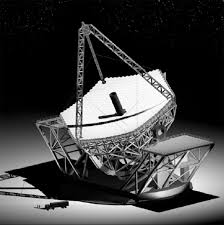
Breaking News
 Interview 1991 - The Origins of the Philosophy of Liberty with Ken Schoolland
Interview 1991 - The Origins of the Philosophy of Liberty with Ken Schoolland
 Silversqueeze: How We Got Here, Where We're Going
Silversqueeze: How We Got Here, Where We're Going
 I asked Grok for Its Opinion on "Grok vs ChatGPT, Which Is Better?"
I asked Grok for Its Opinion on "Grok vs ChatGPT, Which Is Better?"
 You'll own NOTHING and be happy?
You'll own NOTHING and be happy?
Top Tech News
 Build a Greenhouse HEATER that Lasts 10-15 DAYS!
Build a Greenhouse HEATER that Lasts 10-15 DAYS!
 Look at the genius idea he came up with using this tank that nobody wanted
Look at the genius idea he came up with using this tank that nobody wanted
 Latest Comet 3I Atlas Anomolies Like the Impossible 600,000 Mile Long Sunward Tail
Latest Comet 3I Atlas Anomolies Like the Impossible 600,000 Mile Long Sunward Tail
 Tesla Just Opened Its Biggest Supercharger Station Ever--And It's Powered By Solar And Batteries
Tesla Just Opened Its Biggest Supercharger Station Ever--And It's Powered By Solar And Batteries
 Your body already knows how to regrow limbs. We just haven't figured out how to turn it on yet.
Your body already knows how to regrow limbs. We just haven't figured out how to turn it on yet.
 We've wiretapped the gut-brain hotline to decode signals driving disease
We've wiretapped the gut-brain hotline to decode signals driving disease
 3D-printable concrete alternative hardens in three days, not four weeks
3D-printable concrete alternative hardens in three days, not four weeks
 Could satellite-beaming planes and airships make SpaceX's Starlink obsolete?
Could satellite-beaming planes and airships make SpaceX's Starlink obsolete?
Giant Moon Based Telescopes Will Detect Alien Life and Measure Mountains in Other Solar Systems

Space capabilities from SpaceX Super Heavy Starship and being able to build in space will enable 1000 to 1 million times larger projects on the moon and in cis-lunar orbits.
OWL-Moon
OWL-MOON: Very high resolution spectro-polarimetric interferometry and imaging
from the Moon: exoplanets to cosmology
A 100-meter space telescope on the moon will let us directly observe the height of mountains on exoplanets.
A giant moon telescope will let us answer three major questions in astronomy.
1) the detection of biosignatures on habitable exoplanets,
2) the geophysics of exoplanets and
3) cosmology.
Detecting Alien Life in Other Solar Systems
One of our main science objectives is the characterization of exoplanets and biosignatures. There are about ten potentially habitable planet candidates up to 10 pc. But there is no guarantee that even a single one will present biosignatures. We must enlarge the sample and go up to say 40 pc. An Earth-sized planet at 1 AU from a G star has a planet/star brightness ratio of 3.10^−9 for an albedo of 0.3. Thus, for a 8th magnitude star, it means a 32nd magnitude target. For 1 nm spectral resolution spectroscopy needed to detect atomic and molecular emission lines, consider the goal of 1000 photons detected in 3 hours. This needs a 50-meter telescope. To detect 500 photons in the bottom of absorption lines having a depth 10 times the continuum in 3 hours, one would need a 100-meter telescope.

 First totally synthetic human brain model has been realized
First totally synthetic human brain model has been realized Mach-23 potato gun to shoot satellites into space
Mach-23 potato gun to shoot satellites into space

